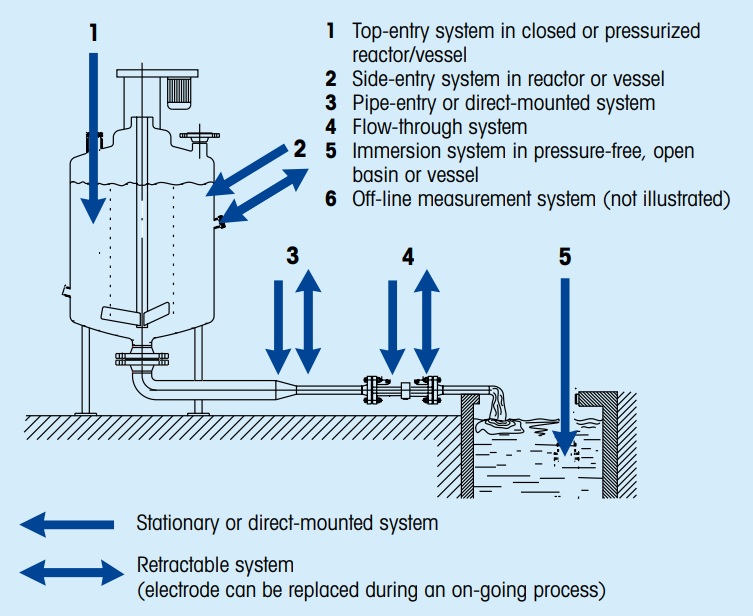Xi'an Kacise Optronics Co.,Ltd. |
|
Verified Suppliers
|
|
KFDO310 integrated on-line fluorescence dissolved oxygen sensor is designed and made based on the quenching principle of excited fluorescence of specific substances in physics. The blue light from the light-emitting diode illuminates the fluorescent material on the inner surface of the fluorescent cap. The fluorescent material on the inner surface is excited and emits red light. By detecting the phase difference between the red light and the blue light, and comparing it with the internal calibration value, the concentration of oxygen molecule can be calculated, and the final value can be output by temperature automatic compensation.
No electrolytes, no polarization
No need to consume oxygen, not affected by the flow rate
Built-in temperature sensor, automatic temperature compensation
Free from chemicals like sulfides
Small drift, fast response, more accurate measurement
Maintenance-free, long service life, lower use cost
Fluorescent caps are easy to replace
RS-485 interface, Modbus-RTU protocol
| Model number | KFDO310 |
| Measuring principle | fluorescence |
| Range | 0ー20 mg/L (0ー200% saturation, 25 °C) |
| Resolution | 0.01 mg/l, 0.1 °C |
| Precision | ± 2% f.s. , ± 0.5 °C |
| Temperature compensation | Automatic temperature compensation (PT1000) |
| Output mode | RS-485 bus, Modbus-RTU protocol |
| Working conditions | 0ー45 °C, < 0.2 mpa |
| Storage temperature | - 5 ~ 65 °C |
| Installation mode | Immersion mounting |
| Cable length | 5 meters, other length can be customized |
| Power consumption | < 0.05 W |
| Power supply | 12 ~ 24 VDC ± 10% |
| Protection level | IP68 |
| Calibration | Two-point calibration |
| Fluorescent cap life | Guaranteed Use for one year (under normal use) |
| Material for sensor housing | Pom and 316L stainless steel |


The temperature sensing part should be immersed below the liquid surface to avoid collision with the film head surface. The head part of the membrane should be free from sediment.
Tips:Galvanic Dissolved Oxygen Sensors

Cross-section of a galvanic dissolved oxygen sensor.
The final electrochemical dissolved oxygen sensor is galvanic. In a galvanic dissolved oxygen sensor, the electrodes are dissimilar metals. Metals have different electropotentials based on their activity series (how readily they give or accept electrons) 17. When placed in an electrolyte solution, the potential between dissimilar metals causes them to self-polarize 16. This self-polarization means that a galvanic DO sensor does not require any warm-up time. In order to reduce oxygen without an external applied potential, the difference in potential between the anode and the cathode should be at least 0.5 volts 16.
The anode in a galvanic dissolved oxygen sensor is usually zinc, lead, or another active metal while the cathode is silver or another noble metal 3. The electrolyte solution can be sodium hydroxide, sodium chloride, or another inert electrolyte 8,27. The electrochemical reaction in galvanic DO sensors is very similar to the reaction in polarographic DO sensors, but without the need for a separate, constant potential. The dissimilar electrodes self-polarize, with the electrons traveling internally from the anode to the cathode 7. The cathode remains inert, serving only to pass on electrons and it does not interfere in the reaction 20. Thus, the anode is oxidized and oxygen is reduced at the surface of the cathode. These reactions occur as follows:

Zn/Pb – zinc or lead anode
NaCl and H2O – sodium chloride solution
Ag – silver cathode *inert electrode, does not react*
Zinc Anode Reaction and Oxidation
2Zn —-> 2Zn2+ + 4e–
Silver Cathode Reaction and Oxygen Reduction
*The Ag cathode is inert and only passes electron without
participating in the reaction* 18
O2 + 4e– + 2H2O —-> 4OH–
4OH– + 2Zn2+ —-> 2Zn (OH)2
Overall Reaction
O2 + 2H2O + 2Zn —-> 2 Zn (OH)2
As in the polarographic dissolved oxygen sensor reaction, the
cathode is left out of the equation because it is an inert
electrode 18. The silver cathode accepts electrons from the anode and passes
them on to the oxygen molecules. This transaction occurs at the
cathode’s surface 8. The current produced by the reduction of oxygen is proportional
to the partial pressure of oxygen in the water sample 15.
The zinc hydroxide that is produced by these reactions is precipitated out into the electrolyte solution. This precipitate is visible as a white solid at the tip of the sensor 7. This precipitate neither coats the anode nor consumes the electrolyte, and thus does not affect the sensor’s performance until the quantity becomes excessive. If this happens, it may interfere with the ions’ ability to carry current between the cathode and the anode 22. When the sensor output is unusually low or the readings do not stabilize, it is necessary to replace the electrolyte solution 7.
As the electrodes in a galvanic DO sensor are self-polarizing, the oxidation of zinc will continue to occur even when the instrument is not in use. A galvanic dissolved oxygen sensor will operate efficiently even as the zinc anode is consumed, though it may need to be replaced more frequently than a polarographic DO sensor.